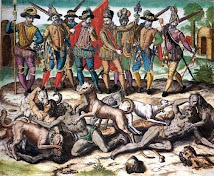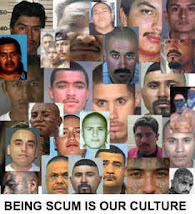
People of African origin probably first arrived in the Americas with the Spanish and Portuguese in the 15th and 16th centuries. For example, Pedro Alonso Niño, traditionally considered the first of many New World explorers of African descent was a navigator in the 1492 Columbus expedition. Those who were directly from Africa mostly arrived in Latin America as part of the Atlantic slave trade, as agricultural, domestic, and menial laborers and as mineworkers. They were also employed in mapping and exploration (for example, Estevanico) and were even involved in conquest (for example, Juan Valiente). They were mostly brought from West Africa and Central Africa in what are now the nations of Nigeria, Ghana, Benin, Angola, and Congo, There are three major groups: the Yoruba, Akan, and the Bantu.
An Afro-Latin American (also Afro-Latino) is a Latin American person of at least partial Black African ancestry; the term may also refer to historical or cultural elements in Latin America thought to emanate from this community.The term can refer to the mixing of African and other cultural elements found in Latin American society such as religion, music, language, the arts and social class.
The term Afro-Latin American, as used in this article refers specifically to black African ancestry and not to European colonial orAfro-Arab ancestry, such as Arab Moroccan or white South African ancestry. The term is not widely used in Latin America outside of academic circles. Normally Afro Latin Americans are called "black" (in Spanish negro, in Portuguese negro or preto). More commonly, when referring to cultural aspects of African origin within specific countries of Latin America, terms carry an Afro- prefix followed by the relevant nationality. however, usage varies considerably from nation to nation.
The accuracy of statistics reporting on Afro-Latin Americans has been questioned, especially where they are derived from census reports in which the subjects choose their own designation, due to the fact that in all countries the concept of black ancestry is viewed with differing attitudes.
Of a total Latin American population of 549,549,000, an estimated 100-150 million are Afro Latin-American. Approximately 5% of the Latin American population self-identify, or are classified by census takers, as being primarily of black ancestry. A further 16% of the population is mulatto, while Zambos are a smaller minority.
Contentious issues
Several issues arise from the theme of African Latin American. One is based on the selection of countries normally included in the definition of Latin America which, being based on the language spoken, excludes all countries in the geographical area, such as Suriname, Trinidad and Tobago, and Jamaica where the people do not speak a Latin-derived language. As a result, several countries which have significant black heritage are excluded from study






































.jpg)






.jpg)







No comments:
Post a Comment